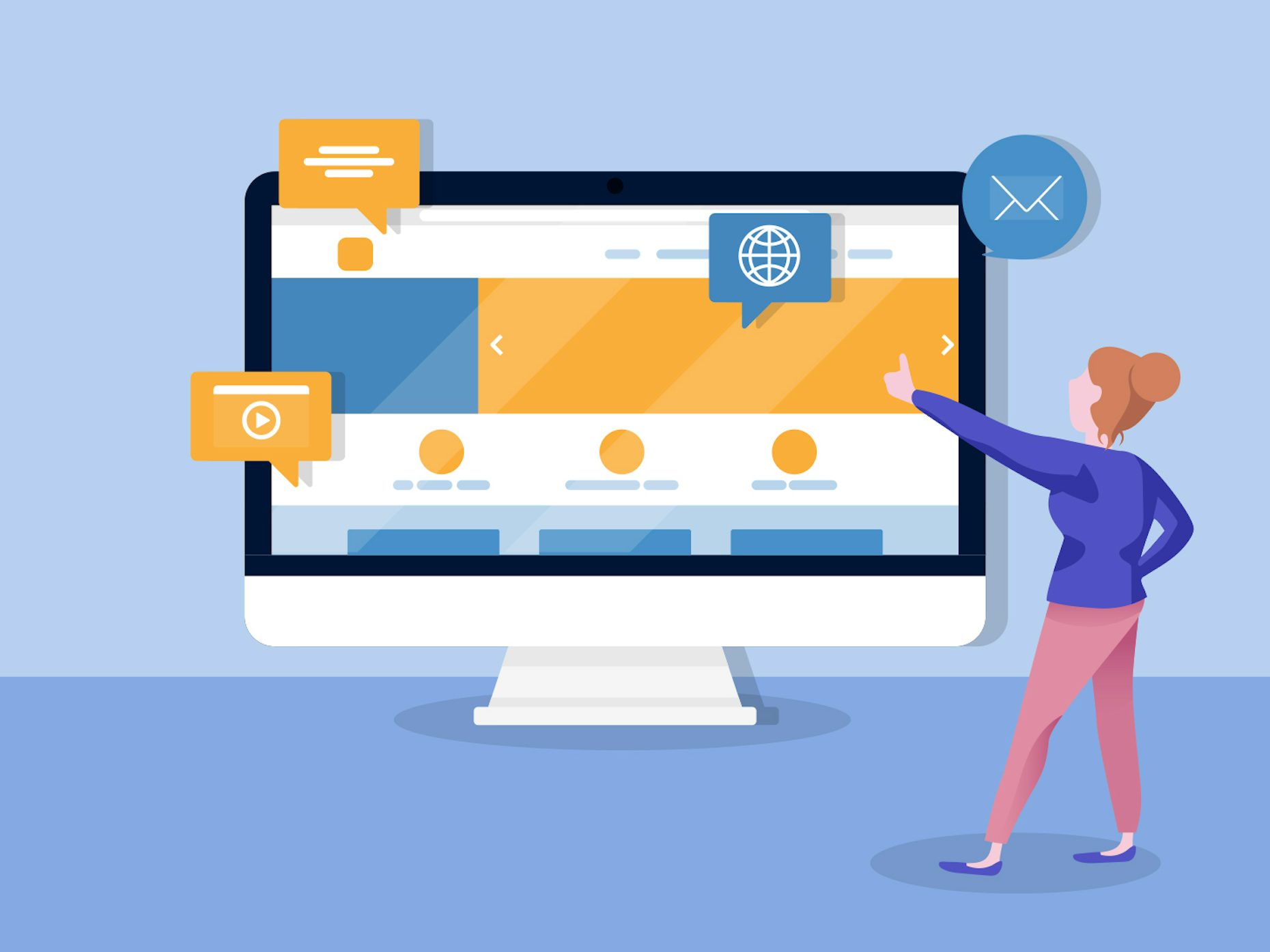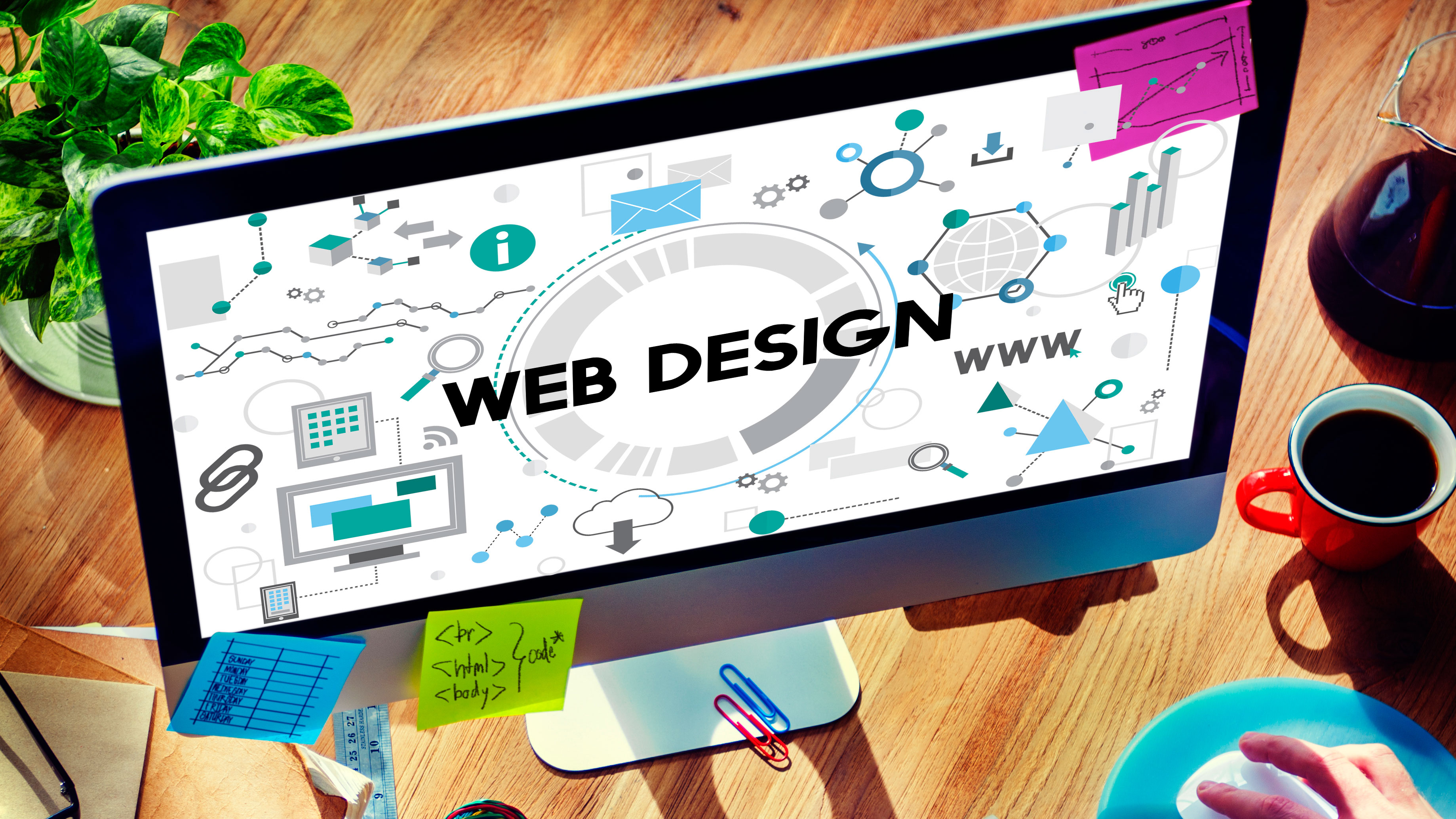All Categories
Featured
Table of Contents
- – Web Design Ledger: Homepage Tips and Tricks:
- – Top 30 Web Design Companies - Apr 2022 - Desi...
- – Web Design Certificate - Web Development Cert...
- – Webdesign Designs, Themes, Templates And ... ...
- – Top Web Design Agencies Ranked - 2022 Reviews...
- – 10 Good Deeds In Web Design - Nielsen Norman ...
- – What Is Web Design, How To Do It Right And B...
- – What Is Web Design? A Comprehensive Guide - ...
- – Chavez Web Design: Web Design San Diego - Ba...
- – Web Design Projects - Behance Tips and Tricks:
- – What Is Web Design, How To Do It Right And B...
Web Design Ledger: Homepage Tips and Tricks:
Quick summary Use and the utility, not the visual design, determine the success or failure of a site. Considering that the visitor of the page is the only person who clicks the mouse and for that reason chooses everything, user-centric style has established as a basic method for successful and profit-oriented web design - web design frederick md.
and the energy, not the visual style, identify the success or failure of a website. Because the visitor of the page is the only person who clicks the mouse and therefore decides everything, user-centric style has ended up being a standard approach for effective and profit-oriented web style. If users can't utilize a feature, it might as well not exist.
g. where the search box ought to be put) as it has currently been carried out in a number of short articles; rather we focus on the approaches which, used effectively, can cause more sophisticated style choices and streamline the process of viewing provided information. Please discover that you may be thinking about the usability-related short articles we have actually released prior to: Concepts Of Good Website Style And Efficient Web Style Guidelines, In order to utilize the principles appropriately we first require to understand how users engage with websites, how they believe and what are the fundamental patterns of users' habits.
Top 30 Web Design Companies - Apr 2022 - Designrush Tips and Tricks:
Visitors glance at each brand-new page, scan a few of the text, and click the first link that captures their interest or slightly resembles the thing they're looking for. There are large parts of the page they do not even look at. Most users look for something interesting (or beneficial) and clickable; as soon as some appealing candidates are found, users click.
If a page supplies users with high-quality content, they want to compromise the content with ads and the design of the site. This is the reason not-that-well-designed sites with premium content acquire a great deal of traffic over years. Material is more vital than the design which supports it.

Extremely basic principle: If a website isn't able to fulfill users' expectations, then designer failed to get his task done effectively and the company loses money. The greater is the cognitive load and the less user-friendly is the navigation, the more ready are users to leave the website and search for alternatives.
Web Design Certificate - Web Development Certificate Program Tips and Tricks:
Neither do they scan website in a direct style, going sequentially from one website section to another one. Instead users satisfice; they pick the very first sensible option. As quickly as they discover a link that appears like it might cause the goal, there is an excellent chance that it will be immediately clicked.
It does not matter to us if we comprehend how things work, as long as we can use them. If your audience is going to act like you're designing signboard, then style great billboards." Users wish to be able to manage their web browser and rely on the consistent information discussion throughout the website.
If the navigation and website architecture aren't intuitive, the variety of concern marks grows and makes it harder for users to comprehend how the system works and how to obtain from point A to point B. A clear structure, moderate visual hints and easily recognizable links can help users to find their path to their goal.
Webdesign Designs, Themes, Templates And ... - Dribbble Tips and Tricks:

Considering that users tend to explore websites according to the "F"-pattern, these three statements would be the first aspects users will see on the page once it is loaded. The style itself is basic and user-friendly, to understand what the page is about the user requires to browse for the answer.
When you have actually achieved this, you can communicate why the system is beneficial and how users can benefit from it. Don't Misuse Users' Perseverance, In every job when you are going to provide your visitors some service or tool, attempt to keep your user requirements very little.
Newbie visitors are prepared to, not filling long web types for an account they might never ever use in the future. Let users explore the website and discover your services without requiring them into sharing private data. It's not sensible to require users to enter an email address to test the feature.
Top Web Design Agencies Ranked - 2022 Reviews - Clutch.co Tips and Tricks:
Stikkit is an ideal example for an user-friendly service which requires nearly absolutely nothing from the visitor which is unobtrusive and soothing. And that's what you want your users to feel on your web website. Apparently, Termite requires more. The registration can be done in less than 30 seconds as the type has horizontal orientation, the user does not even need to scroll the page.
A user registration alone is enough of an impediment to user navigation to reduce inbound traffic. 3. Handle To Focus Users' Attention, As sites supply both static and dynamic content, some aspects of the user interface attract attention more than others do. Clearly, images are more appealing than the text simply as the sentences marked as strong are more appealing than plain text.
Focusing users' attention to specific areas of the website with a moderate usage of visual aspects can help your visitors to get from point A to point B without thinking of how it really is supposed to be done. The less concern marks visitors have, the they have and the more trust they can develop towards the company the website represents.
10 Good Deeds In Web Design - Nielsen Norman Group Tips and Tricks:
4. Pursue Function Exposure, Modern website design are typically slammed due to their method of assisting users with aesthetically appealing 1-2-3-done-steps, big buttons with visual effects and so on. However from the style point of view these elements really aren't a bad thing. On the contrary, such as they lead the visitors through the site content in a really easy and user-friendly method.
The site has 9 main navigation options which show up at the first glance. The option of colors might be too light. is a basic principle of effective user interface design. It does not actually matter how this is accomplished. What matters is that the content is well-understood and visitors feel comfortable with the way they connect with the system.
com gets straight to the point. No charming words, no exaggerated declarations. Instead a price: just what visitors are trying to find. An optimal service for efficient writing is touse brief and concise phrases (come to the point as quickly as possible), usage scannable layout (categorize the material, use multiple heading levels, use visual components and bulleted lists which break the flow of consistent text blocks), use plain and unbiased language (a promo doesn't need to seem like ad; provide your users some reasonable and unbiased reason why they need to use your service or stay on your website)6.
What Is Web Design, How To Do It Right And Best Skills - Rock ... Tips and Tricks:
Users are seldom on a website to enjoy the style; furthermore, most of the times they are trying to find the details despite the style - web design frederick md. Aim for simplicity instead of intricacy. From the visitors' perspective, the very best website design is a pure text, with no advertisements or additional content obstructs matching precisely the question visitors used or the content they have actually been looking for.
Finch clearly presents the information about the site and offers visitors a choice of alternatives without overcrowding them with unnecessary content. Not only does it assist to for the visitors, but it makes it possible to perceive the details provided on the screen.
Complex structures are more difficult to check out, scan, analyze and work with. If you have the option between separating two style sectors by a visible line or by some whitespace, it's typically much better to use the whitespace solution. (Simon's Law): the better you manage to offer users with a sense of visual hierarchy, the simpler your content will be to view.
What Is Web Design? A Comprehensive Guide - Wix.com Tips and Tricks:
The same conventions and rules should be applied to all elements.: do the most with the least amount of hints and visual aspects. Clarity: all elements should be designed so their meaning is not uncertain.
Conventions Are Our Good friends, Conventional design of site elements doesn't lead to a dull web site. In truth, as they reduce the discovering curve, the need to figure out how things work. For example, it would be an usability nightmare if all sites had various visual presentation of RSS-feeds. That's not that different from our regular life where we tend to get used to standard concepts of how we organize data (folders) or do shopping (positioning of products).
comprehend what they're getting out of a site navigation, text structure, search placement etc. A case in point from use sessions is to equate the page in Japanese (assuming your web users do not understand Japanese, e. g. with Babelfish) and supply your usability testers with a job to find something in the page of various language.
Chavez Web Design: Web Design San Diego - Bakersfield ... Tips and Tricks:
Steve Krug recommends that it's better to, but benefit from conventions when you do not. 10. Test Early, Test Typically, This so-called TETO-principle should be applied to every website design task as usability tests typically supply into significant problems and issues related to a provided layout. Test not too late, not too little and not for the incorrect factors.
Some essential points to keep in mind: according to Steve Krug, and screening one user early in the project is much better than screening 50 near completion. Accoring to Boehm's first law, mistakes are most regular throughout requirements and style activities and are the more pricey the later on they are gotten rid of.
That means that you create something, test it, repair it and after that test it again. There may be issues which have not been discovered throughout the preliminary as users were almost blocked by other issues. functionality tests. Either you'll be indicated the issues you have or you'll be indicated the absence of major design defects which is in both cases a helpful insight for your job.
Web Design Projects - Behance Tips and Tricks:

This holds for designers as well. After you've worked on a site for couple of weeks, you can't observe it from a fresh viewpoint anymore. You know how it is built and for that reason you understand exactly how it works you have the wisdom independent testers and visitors of your site wouldn't have.
It can be connected to other areas such as graphic design, user experience, and multimedia arts, however is more aptly seen from a technological perspective. It has become a large part of individuals's everyday lives. It is tough to picture the Internet without animated graphics, various styles of typography, background, videos and music.

During 1991 to 1993 the Web was born. Text-only pages could be seen utilizing a basic line-mode browser. In 1993 Marc Andreessen and Eric Bina, created the Mosaic web browser. At the time there were multiple internet browsers, however the bulk of them were Unix-based and naturally text heavy. There had actually been no integrated technique to graphic design elements such as images or noises.
What Is Web Design, How To Do It Right And Best Skills - Rock ... Tips and Tricks:
The W3C was developed in October 1994 to "lead the Internet to its full potential by establishing common protocols that promote its development and guarantee its interoperability." This prevented any one company from monopolizing a propriety browser and programming language, which could have modified the impact of the Web as a whole.
As this has taken place the innovation of the web has likewise moved on. There have actually also been substantial modifications in the way individuals use and access the web, and this has changed how websites are developed.
Learn more about Lovell Media Group LLC or TrainACETable of Contents
- – Web Design Ledger: Homepage Tips and Tricks:
- – Top 30 Web Design Companies - Apr 2022 - Desi...
- – Web Design Certificate - Web Development Cert...
- – Webdesign Designs, Themes, Templates And ... ...
- – Top Web Design Agencies Ranked - 2022 Reviews...
- – 10 Good Deeds In Web Design - Nielsen Norman ...
- – What Is Web Design, How To Do It Right And B...
- – What Is Web Design? A Comprehensive Guide - ...
- – Chavez Web Design: Web Design San Diego - Ba...
- – Web Design Projects - Behance Tips and Tricks:
- – What Is Web Design, How To Do It Right And B...
Latest Posts
Beginner's Guide: How To Learn Web Design At Home - Medium Tips and Tricks:
Why Web Design Is Dead - - Ux Magazine Tips and Tricks:
Web Design Inspiration : The Best Website Design Ideas Tips and Tricks:
More
Latest Posts
Beginner's Guide: How To Learn Web Design At Home - Medium Tips and Tricks:
Why Web Design Is Dead - - Ux Magazine Tips and Tricks:
Web Design Inspiration : The Best Website Design Ideas Tips and Tricks: